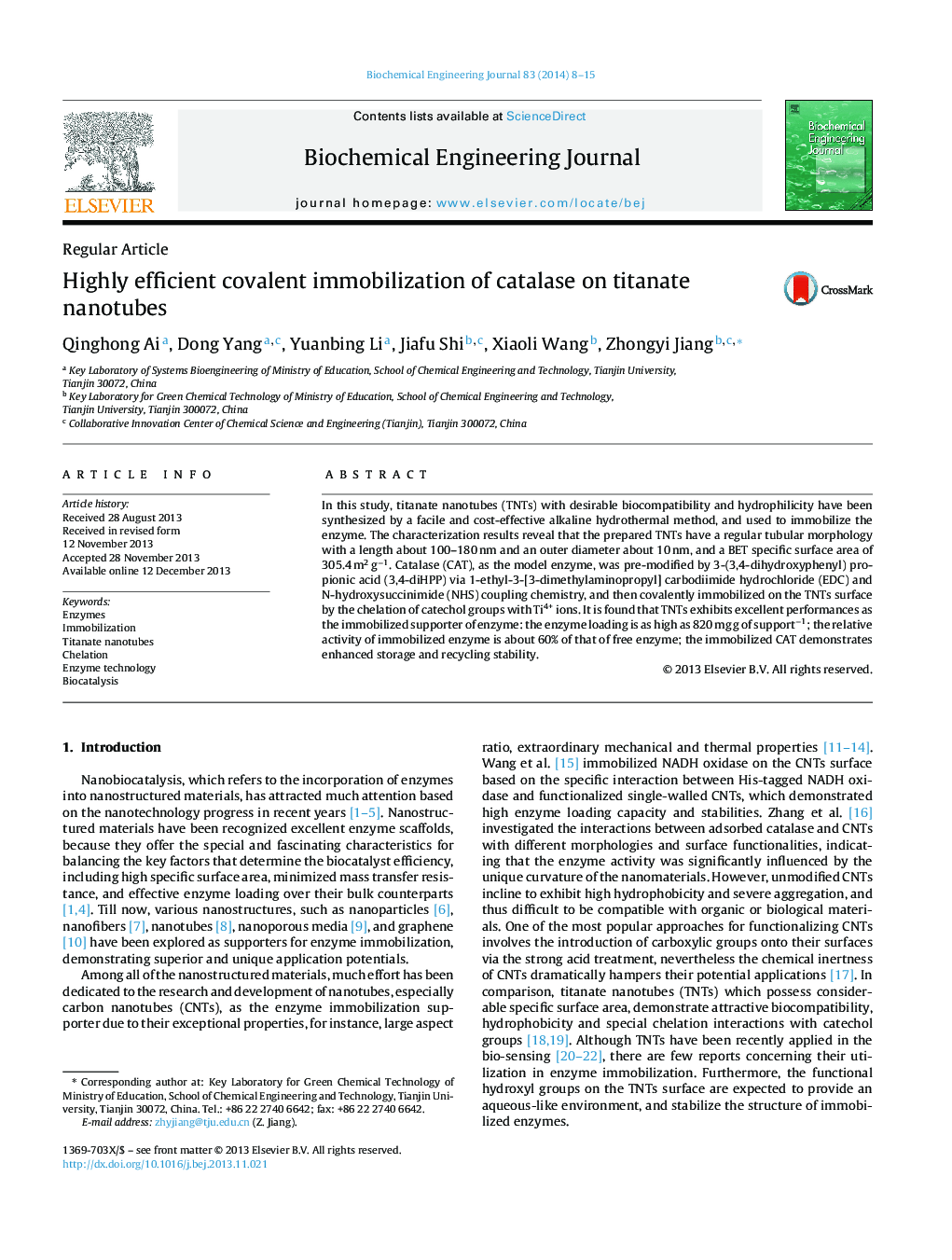| Article ID | Journal | Published Year | Pages | File Type |
|---|---|---|---|---|
| 3185 | Biochemical Engineering Journal | 2014 | 8 Pages |
•Titanate nanotubes (TNTs) were synthesized and used for enzyme immobilization.•Catalase was covalently immobilized on the TNTs surface in a facile way.•Immobilized catalase showed high loading capacity, catalytic activity and stability.
In this study, titanate nanotubes (TNTs) with desirable biocompatibility and hydrophilicity have been synthesized by a facile and cost-effective alkaline hydrothermal method, and used to immobilize the enzyme. The characterization results reveal that the prepared TNTs have a regular tubular morphology with a length about 100–180 nm and an outer diameter about 10 nm, and a BET specific surface area of 305.4 m2 g−1. Catalase (CAT), as the model enzyme, was pre-modified by 3-(3,4-dihydroxyphenyl) propionic acid (3,4-diHPP) via 1-ethyl-3-[3-dimethylaminopropyl] carbodiimide hydrochloride (EDC) and N-hydroxysuccinimide (NHS) coupling chemistry, and then covalently immobilized on the TNTs surface by the chelation of catechol groups with Ti4+ ions. It is found that TNTs exhibits excellent performances as the immobilized supporter of enzyme: the enzyme loading is as high as 820 mg g of support−1; the relative activity of immobilized enzyme is about 60% of that of free enzyme; the immobilized CAT demonstrates enhanced storage and recycling stability.
